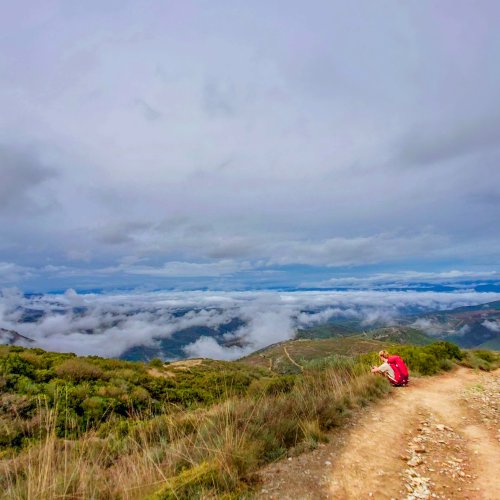If in doubt, see a podiatrist! Despite wearing expensive, first-rate hiking boots or hiking sandals, I need custom made orthotics. It was a serious investment, but replacing the factory insoles was necessary. FYI, I offset the initial investment by having my footwear resoled every 1,000 km or so.
Consider that, in trying to save a few dollars, euro, pounds, when selling these boots, shoes or sandals, the manufacturer is going to use the least expensive insole they can reasonably get away with.
There are some good aftermarket insoles out there. Personally, I use Superfeet Flexmax insoles for my daily casual wear. However, on Camino, I only use my prescription orthotic insoles. These do NOT have the hard molded foot / heel bed that some other Superfeet insoles have. My podiatrist does not like the Superfeet models with the hard base.
In fact, the podiatrist in Burgos who did surgery to literally carve off infected, really thick (1 cm) callouses on both heels on my first Camino in 2013 actually threw them away in front of me...loudly pronouncing them "basura" (garbage)... Dude!...those were expensive! Then he hand-made expedient insoles to protect my heels and I was good to go...two days later.
If you take good care of your feet, they will take care of you. Any footwear solution is a foot support "system."
It begins with the outer boot, shoe or sandal to provide support, stability and protection.
Then there is the insole. The insole provides added support, stability and comfort to your foot/feet.
Finally, there are socks. The socks can overcome deficiencies in some insoles and can counter some side effects of poor footwear selection. Your socks wick moisture from your feet, reduce swelling, reduce friction, provide insulation from weather and foreign objects getting in to the shoe, boot, or sandal, and provide cushioning against impacting the toe box and some general padding to provide insulation and comfort. Socks are GOOD. They are also a relatively inexpensive way to protect your feet.
Some points to consider when choosing socks:
1. Never wear cotton. It absorbs water and does not dry fast.
2. Wool rules! Outer socks ought to be all more predominately Merino Wool and thicker is usually better. I use Smart Wool medium weight crew merino wool socks for spring and summer Caminos. They have some Lycra in them for stretch and durability, but are at least 80 percent wool.
3. Liners against the skin should reduce friction and wick moisture from the foot. Many people find that liner socks made of CoolMax, Lycra, Microfiber, or even supermarket, calf-high nylon "footies" work well to do this. My personal preference is for REI CoolMax liners in Navy Blue (hides dirt) or Smart Wool Merino wool interchangeably.
This is why many of us veterans state repeatedly that the most important piece of Camino gear is your footwear, followed by your rucksack. All other gear selections are relatively superfluous and highly personal. But, proper fitting and functioning footwear and a similarly well fitted rucksack, result in your Camino being much more rewarding.
Remember, not all suffering is mandatory... Pain sucks! And, unnecessary pain, that might have been avoided, is definitely dumb.
I hope this helps












